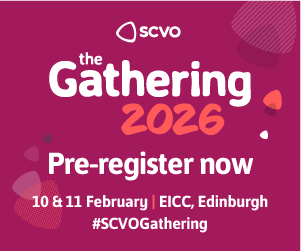Glasgow show people question what games' legacy will do for them
One section of Glasgow’s ethnically diverse communities believes the entire games will pass them by without note – and will be happy for it to happen.
Just next to Dalmarnock sewage works is an area called Glasgow’s Showman Quarter, a former industrial estate that has been home to the city’s largest travelling community – fairground workers who have, since back in the mid 1800s, made Glasgow their home.
An estimated 80% of Scotland’s showpeople travel out from one of the 50 or so yards in the city. Around 90% of these yards are located in the east end districts of Shettleston, Carntyne, Bridgeton and Parkhead – right in the midst of the games area.
Despite these communities defying all stereotypes – their immaculate tarmac yards are bought or leased, they pay council tax, their children go to local schools – they still face a battle against prejudice, something they believe the games legacy will do little to address.
Pete Quinn, a third generation showman who lives on the Dalmarnock site, said while their relationship with Glasgow Council was “fine” they live under constant threat of upheaval from their current site – a situation which became even more vulnerable when neighbouring areas were being regenerated in preparation for the games.
We’re not high on the council agenda for money being spent...We’re not a popular cause
“The irony is when they started to clear up this area, demolishing houses and the like, we went from minority to majority,” he said.
“There’s a bit of bad feeling about the games. We felt we could’ve been told more about what was happening – maybe someone could’ve told us to put our minds at ease. That’s why sometimes we think we’re not really part of what’s happening – they don’t see us as Glaswegians the same as others, despite us being here for literally centuries.”
As a result, the legacy which have been promised to other areas with the creation of children’s swing parks, play areas and landscaped greenspace seems to have passed them by.
“We’re not high on the council agenda for money being spent,” said Quinn. “We’re not a popular cause. We’re just happy to be left alone. It would be nice to get reassurances though – that there aren’t plans to relocate us. We always feel that’s a sword hanging above our heads.”
Quinn’s daughter, Jessica, will be volunteering at the games. She says she is as much part of the city as anyone else but believes they’ll never fully integrate.
“If people come here and see how we live they’ll be surprised,” she said. “We get confused with gypsy travelers and folk just like to hate us. They don’t want to know the reality – like we all work, we got to school and, as in my case, go to university.
“I’m studying public planning at Glasgow University and I’m not the first in my family to do a degree.”
A lasting legacy for her will be in changing attitudes.
“I’m doing my bit by volunteering,” she said. “People are surprised when I tell then where I live, where I come from. But the games themselves won’t change attitudes. That’s a legacy that is centuries old and has never been adequetly addressed.
I doubt it ever will.”






